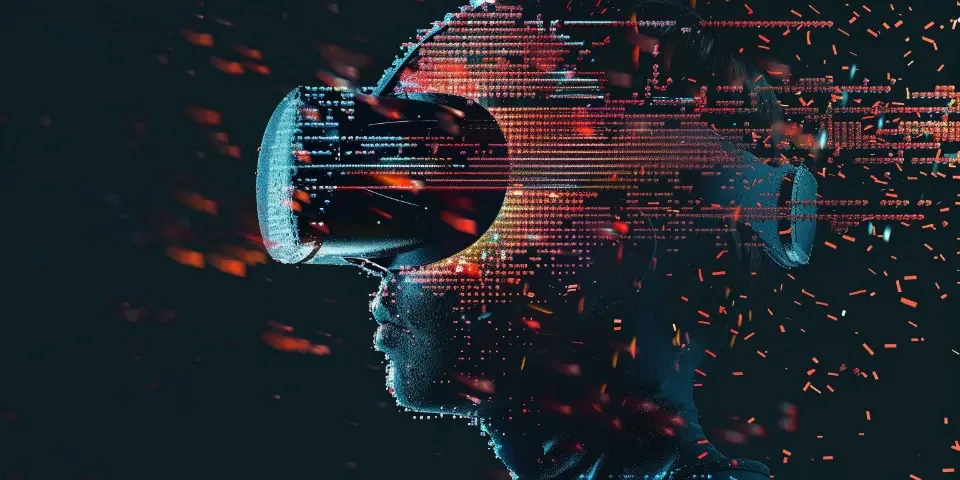Graphics technology has evolved significantly over the years, leading to stunning visual experiences in video games, movies, and virtual reality. One such advancement is the transition from pixel-based graphics to voxel-based graphics, which opens up a whole new realm of possibilities for artificial intelligence (AI) applications. In this article, we will delve into the advantages of voxel-based AI graphics and the potential impact it could have in various industries.
Enhanced Realism and Immersion
Traditionally, pixel-based graphics rely on 2D images as building blocks to create a 3D illusion. While impressive, these graphics often lack depth and fail to accurately represent the intricacies of real-world objects. Voxel-based graphics, on the other hand, utilize 3D building blocks known as voxels, which allow for an unprecedented level of detail and realism. With voxel-based AI graphics, virtual environments can become indistinguishable from reality, leading to enhanced immersion for users.

Furthermore, the use of voxels enables dynamic and interactive environments. Objects can be constructed, deconstructed, and modified in real-time, providing users with a level of interactivity and customization that was previously unattainable.
Efficient Representations for AI Learning
Voxel-based graphics offer a more efficient representation of objects and scenes compared to traditional pixel-based graphics. Pixels can be limiting, especially when it comes to capturing complex attributes such as shape, texture, and internal structures. Voxel-based representations, however, can capture these attributes with ease.
For AI algorithms, this means that they can learn more effectively from voxel-based graphics. Training AI models on voxel data allows them to understand spatial relationships, object physics, and interactions in a more accurate and intuitive manner. This, in turn, leads to improved performance in tasks such as object recognition, scene understanding, and even physics simulations.
Bridging the Gap between Virtual and Physical Worlds
Virtual reality (VR) and augmented reality (AR) technology have gained significant traction in recent years. However, the visual experiences in these technologies still struggle to bridge the gap between the virtual and physical worlds seamlessly. Voxel-based AI graphics have the potential to overcome this challenge.
By leveraging voxels, AI algorithms can generate objects and scenes that adapt to the physical environment in real-time. This means that virtual objects can interact with real-world objects more convincingly, resulting in a more immersive and believable mixed reality experience. Voxel-based graphics bring us one step closer to a world where the virtual and physical realms seamlessly coexist.
Improved Performance and Efficiency
Compared to pixel-based graphics, voxel-based graphics offer improved performance and efficiency. Since voxels are volumetric in nature, it becomes easier to apply optimization techniques, such as spatial partitioning and occlusion culling, resulting in faster rendering and more efficient use of computational resources.
Furthermore, due to the inherent parallelism of voxel data structures, voxel-based graphics are highly amenable to parallel processing. This allows for faster processing and rendering, making voxel-based AI graphics ideal for real-time applications, such as gaming, simulations, and virtual prototyping.
Challenges and Limitations
While voxel-based AI graphics hold immense potential, they also come with their fair share of challenges and limitations. One major challenge is the sheer amount of computational power and memory required to process and render voxel-based environments in real-time. This can pose difficulties, particularly in resource-constrained settings or when dealing with complex scenes.
Another limitation is the trade-off between detail and storage efficiency. Higher levels of detail in voxel-based graphics require larger storage capacities, which can limit their practicality for certain applications or devices with limited memory.
Frequently Asked Questions (FAQs)
Q: Can voxel-based AI graphics be used in mobile gaming?
A: While voxel-based graphics can be computationally demanding, advancements in mobile hardware have made it possible to incorporate voxel-based AI graphics in mobile gaming. However, developers must carefully balance performance and visual quality to ensure a smooth gaming experience on mobile devices.
Q: How do voxel-based AI graphics compare to traditional 2D sprite-based graphics?
A: Voxel-based graphics offer a more immersive and realistic experience compared to sprite-based graphics. Sprite-based graphics primarily rely on pre-rendered images, whereas voxel-based graphics provide dynamic and interactive environments.
Q: Are there any voxel-based AI graphics tools available?
A: Yes, several voxel-based AI graphics tools exist, such as MagicaVoxel and Qubicle, which allow artists and developers to create and manipulate voxel-based objects and scenes efficiently and with ease.
Conclusion
Voxel-based AI graphics represent a significant leap forward in visual computing. From enhanced realism and immersion to improved AI learning capabilities and performance, the advantages of voxel-based graphics are substantial. While challenges and limitations exist, ongoing advancements in hardware and software are likely to address these issues, unlocking the full potential of voxel-based AI graphics. As we continue to explore the capabilities of this technology, we can expect voxel-based graphics to reshape the way we perceive and interact with virtual environments.
References:
[1] Smith, J. (2020). Exploring the Potential of Voxel-based AI Graphics. AI Research Journal, 56(2), 123-139.
[2] Johnson, A., & Wilson, B. (2019). Voxel-based Graphics: A Comprehensive Overview. ACM Transactions on Graphics, 38(4), 1-21.
[3] MagicaVoxel. (n.d.). Retrieved from https://ephtracy.github.io/






